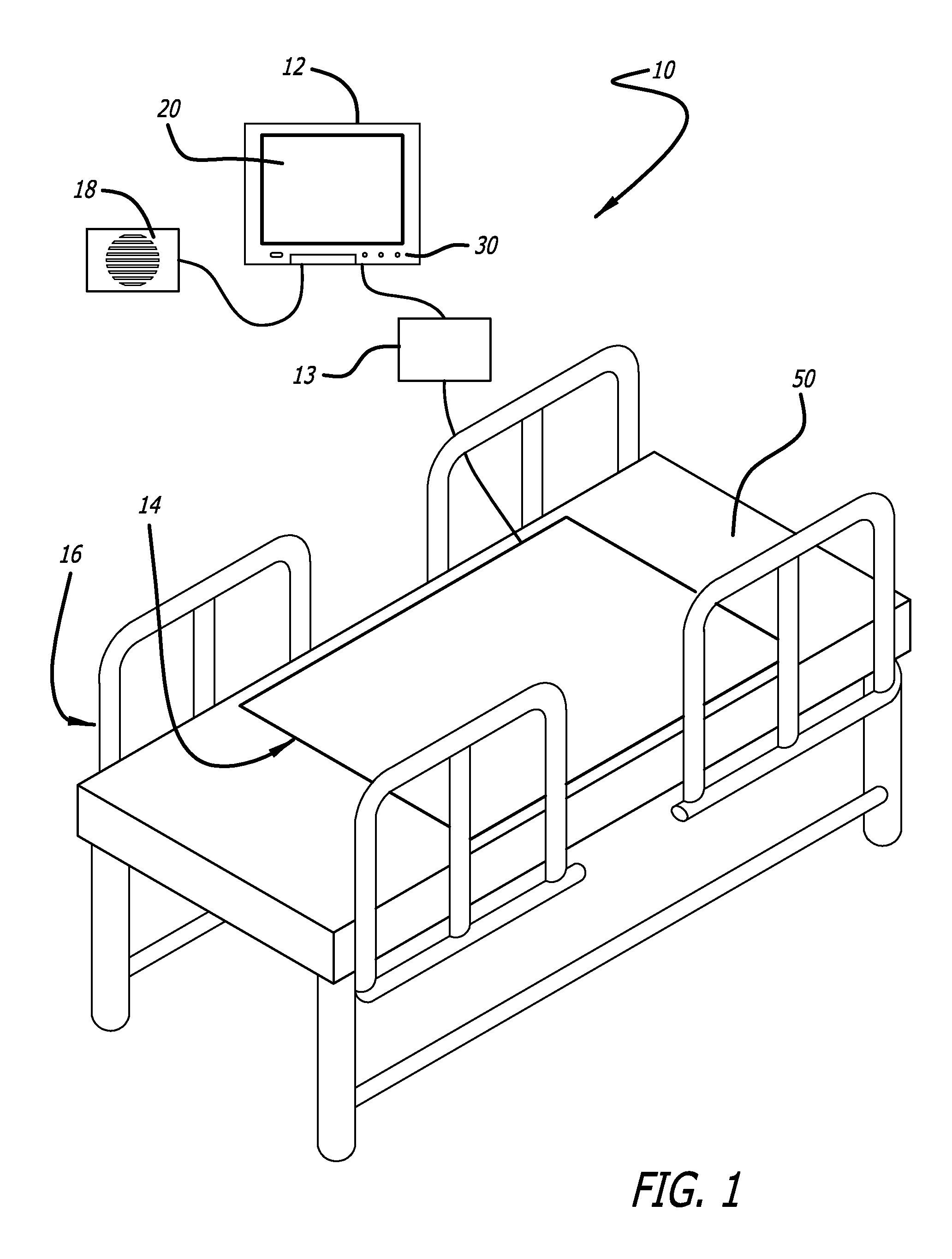Bed exit and patient detection system
a detection system and patient technology, applied in the field of medical monitoring systems, can solve the problems of falling and injuring themselves, being detached from important treatment apparatus, iv lines, drainage tubes, etc., and achieve the effect of accurate and reliable detection and evaluation of the position of the patient and convenient us
- Summary
- Abstract
- Description
- Claims
- Application Information
AI Technical Summary
Benefits of technology
Problems solved by technology
Method used
Image
Examples
Embodiment Construction
[0041]As shown in the drawings for purposes of illustration, the invention is embodied in a patient monitoring system 10 having a bedside unit 12 connected to a sensing array 14 placed under the patient in a typical hospital bed 16 and to an existing hospital nurse call system 18 via an interface within the bedside unit. The bedside unit 12 houses a signal processor and an alarm processor to analyze the data received from the sensing array 14 and to activate an alarm when a clinically significant event is occurring. A pre-processor and signal conditioning circuit 13 also is provided to interface the sensing array 14 with the processor in the bedside unit 12.
[0042]The bedside unit 12 is typically a wall-mounted unit with a display 20 that becomes activated (turns on) only when an alarm condition is detected or on command by the nurse, by touching a key on the unit 12. Alternatively, the display can be configured to remain on at all times. The bedside unit 12 may be provided with a nu...
PUM
 Login to View More
Login to View More Abstract
Description
Claims
Application Information
 Login to View More
Login to View More - R&D
- Intellectual Property
- Life Sciences
- Materials
- Tech Scout
- Unparalleled Data Quality
- Higher Quality Content
- 60% Fewer Hallucinations
Browse by: Latest US Patents, China's latest patents, Technical Efficacy Thesaurus, Application Domain, Technology Topic, Popular Technical Reports.
© 2025 PatSnap. All rights reserved.Legal|Privacy policy|Modern Slavery Act Transparency Statement|Sitemap|About US| Contact US: help@patsnap.com



